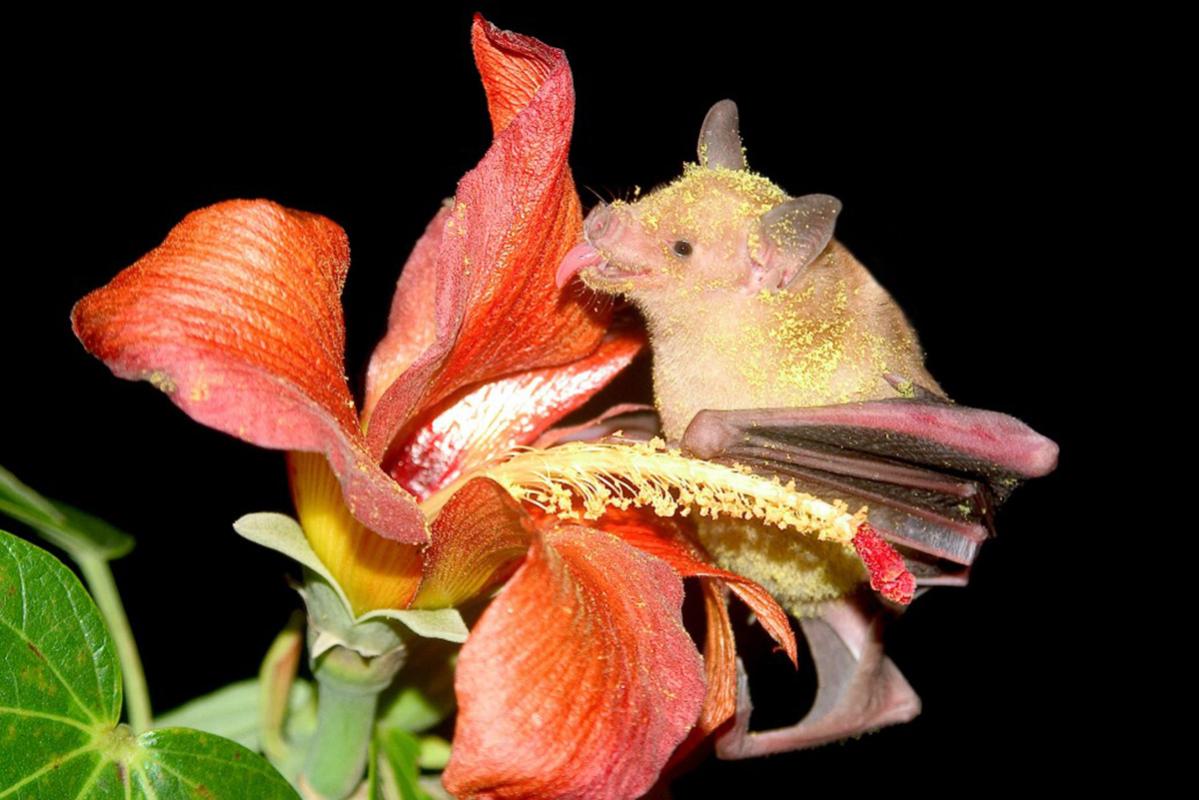Islands are natural laboratories of evolution and are home to many unique species of animals and plants that are found nowhere else on Earth. But since the arrival of humans, islands have lost many species. In the Caribbean alone, more than half of the mammal species went extinct after human colonisation. Can nature restore the numbers of species on islands to those before human arrival? How long would it take for nature to regain this lost diversity?
To answer these questions, Luis Valente at the Musem für Naturkunde Berlin (Germany) and Liliana Dávalos of Stony Brook University (USA) together with Rampal Etienne at the University of Groningen (Netherlands), compiled data on the most diverse group of mammals on the islands of the Greater Antilles: bats. The research team studied the New World leaf-nosed bats and their close relatives, an ecologically diverse tropical group that includes the fishing bat, many fig-eating bats, and the famous vampire bats. Using genetic and fossil data covering all known Greater Antilles species, including those that went extinct over the last 20 thousand years or so, they reconstructed the evolutionary history of the group.
Their results were surprising: they found nearly a third of the bat species in the Greater Antilles were wiped out over this time. Although there is a debate on whether natural changes or human actions caused these extinctions, the latest fossil data show the largest wave of bat extinction happened after human arrival. Using models first introduced in the late 1960s, but never before implemented to include the processes of colonization, extinction and formation of new species on islands, they found the bat diversity of the Greater Antilles had strong tendencies toward maintaining stable number of species over millions of years.
Based on this unprecedented result, they then used computer simulations to predict how long it would take for the islands to recover the number of species lost. Remarkably, they found that nature would need at least 8 million years to regain the diversity of now-extinct species. If, as supported by most of the current evidence, humans caused many of these extinctions, that means 8 millions years are needed to bring back the number of species lost in the few thousand years since humans arrived! The remarkably long time required to restore diversity reveals the staggering consequences of extinctions caused by humans on long-term, natural evolutionary dynamics on islands.
The research was supported in part by funding from the Alexander von Humboldt Foundation, the Brandenburg Ministry of Science, Research and Culture and the German Research to Valente, Netherlands Organisation for Scientific Research to Etienne, and the National Science Foundation to Dávalos.
Publication: Valente L., Etienne R.S., Dávalos L.M. Recent extinctions disturb path to equilibrium diversity in Caribbean bats. Nature Ecology and Evolution, In Press.
Press Contact: in Europe, Luis Valente luis.valente@mfn-berlin.de
In the Americas, Liliana Dávalos, liliana.davalos-alvarez@stonybrook.edu
To promote the article you can have these Photographs:
- Phyllonycteris_poeyi_Carlos_Mancina.jpg: Poey’s flower bat (Phyllonycteris poeyi), a representative of group of bats that colonized the Greater Antilles millions of years ago, diversifying into several nectarivorous and frugivorous bats. Photo credit: Carlos Mancina.
- Monophyllus_redmani_Carlos_Mancina.jpg: Leach's single leaf bat (Monophyllus redmani), one of two species of Antillean long-tongued bats endemic to the Greater Antilles. Photo credit: Carlos Mancina.
- Artibeus_jamaicensis_Carlos_Mancina.jpg: Jamaican fruit bat (Artibeus jamaicensis), a recent colonist to the Greater Antilles widely distributed throughout Mexico and Central America, approaching fruit of Solanum. Photo credit: Carlos Mancina.
- Artibeus_jamaicensis_Brock_Fenton.jpg: Jamaican fruit bat (Artibeus jamaicensis), a recent colonist to the Greater Antilles widely distributed throughout Mexico and Central America. Photo credit: Brock Fenton
